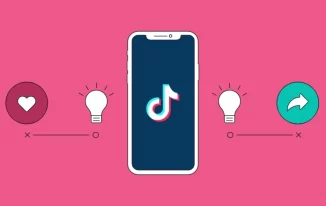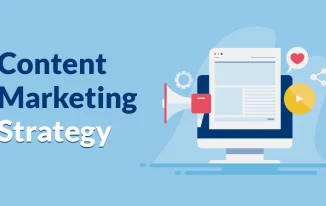Traditional vs Headless CMS the Software that enables users to produce, manage, and alter digital content on a website without the need for specific technical knowledge is known as a content management system, or CMS.
Enterprise content management (ECM) and web content management both frequently employ a CMS (WCM). Typically, it consists of three primary parts:
- A content repository
- A presentation layer
- A publishing workflow
Every website needs content management systems to work properly. They give all the information a clear framework, which makes it simple for users who can be looking for content via logical categories. The user interface for creating and modifying information, as well as a set of tools for managing the content, are the two main aspects that CMS normally offers.
Comparison between Traditional vs Headless CMS:
- The Traditional CMS vs. Headless CMS debate: The standard content management system (CMS) and headless CMS systems are now widely contrasted since the former allows enterprise marketers to distribute content more quickly across any digital channel or device.
- A content management system that separates the frontend presentation layer from the backend infrastructure is known as a headless CMS. As a result, the capabilities of the CMS are not a constraint on the digital experiences that developers can produce.
- In the past year, the headless CMS has gained traction, and some Fortune 500 firms have already embraced the technology.
- A CMS may furthermore offer tools for search engine optimization (SEO) to help increase the visibility of website content.
- There are many different CMS software options, from straightforward installations on a single server to sophisticated enterprise-level programmes that support numerous users and sites.
- Furthermore, they aim to create a sophisticated, feature-rich website that will impress visitors and set them apart from other businesses. On the other hand, they might not have the in-house development capabilities to create such a site from scratch.
The Traditional CMS:
Traditional content management systems (CMS), such as WordPress or Drupal, are monoliths that combine a website's front end and back end in a clean and user-friendly application code base.
They are made up of the presentation layer and the content database, respectively. Many firms may establish a straightforward, user-friendly website with a typical CMS without spending money on expensive development resources.
Traditional CMS solutions are also frequently highly user-friendly and intuitive, especially for individuals with no technical knowledge. They therefore offer the perfect option for companies that wish to build a simple website without going over budget.
A conventional CMS will facilitate speedy setup and enable site management using a single source interface. It can supply all important details on where each page should go as well as crucial SEO plugins.
Read: Drupal to WordPress Migration: How to Get the Best Result
Some of the benefits of traditional CMS choice for many deployment types, such as:
- To create a personal website.
- A single system powers the entity's whole website, making site management simpler.
- Management of content is much simpler.
- capable of using themes and templates to regulate the front-end design
- There are numerous established communities that can help small company owners get started.
- Low technological requirements make entrance possible.
- Beyond occasional basic maintenance services, doesn't require any form of collaboration.
The Headless CMS: Modern era of system
Any kind of back-end content management system is referred to as a headless CMS, also known as headless software or headless system. With a headless CMS, you can manage content in one location and distribute it to any frontend of your choice.
The ability to incorporate content into any system, piece of software, or website by simply calling the headless CMS's exposed APIs makes this crucial to omnichannel initiatives.
The simplicity of use of a traditional CMS is duplicated by a headless CMS, but with the additional flexibility of contemporary API-based architecture.
This style of architecture facilitates the CMS's integration with other software programmes and services, enabling the delivery of more effectively structured content and the creation of sophisticated digital experiences.
A headless CMS also makes it simpler to manage and update content, which is another advantage. Every time something is modified on the backend of a traditional CMS, the front end must also be updated.
Users may find this to be time-consuming and frustrating. But with a headless CMS, changes may be made without disrupting the user interface on the front end.
Ecommerce and Omni channel marketers that need to swiftly build in-the-moment experiences and content for many consumer touch-points are an excellent use case for a headless CMS. This makes it much easier for enterprises to keep their content up-to-date.
Furthermore, the Headless CMS separates the front-end display layer from the back-end architecture. Developers may now produce digital experiences that are not constrained by the capabilities of the CMS thanks to this. The ability to provide content to any channel or device is one of the main advantages of a headless CMS. You may use the headless CMS to power.
(i) A website
(ii) A mobile app
(iii) A smart watch app
This gives the businesses the freedom to adapt to the needs of their clients across a variety of channels.
Some of the benefits of Headless CMS choice where deployment suitable for:
- Headless CMS's speed can help to alleviate bottlenecks in development and marketing.
- Additionally, a sizable content repository and omnichannel content that uses a variety of CMS types are required.
- Experiences on websites need to be quick, real-time, and responsive.
- A top concern is ensuring business security.
- Comparing between the Traditional vs Headless CMS, the Headless CMS help better functioning in ecommerce sites that are large and have a lot of material must be managed, Any device can serve the material.
- The headless Application Programming Interface (API) allows developers to focus more on display and less on content.
- front-end independent A headless CMS is unconcerned with where the material is going or what device will be used to show it. By giving developers the opportunity to utilise their favourite framework and tools, it only serves to enhance the content.
- Simple content production, free from the concern that everything is contained in a single system.
Digital Evolution and Content Velocity:
The world we live in today has transformed as a result of the digital revolution. All industries have seen a revolution as a result of this. The fight to evolve and keep ahead of the competition is on among digital and content marketers in the modern world.
They were able to use resources more effectively and quickly because to the Headless CMS's efficiency improvements.
In case of the Traditional vs Headless CMS the Scalability is crucial for success in the quick-paced business world of today.
As businesses adopt agile workflows and procedures, they must do so rapidly. Entrepreneurs are developing policies and client demands in order to outperform their rivals.
However, if the business relies on the developers to repeatedly modify the system without getting customer approval, its growth would be seriously constrained. Additionally, you run a higher chance of security lapses and data loss as the business grows.
Pitfalls:
- Realizing that the traditional CMS may not have the necessary infrastructure to keep up with the rapidly evolving digital environment and the volume of material that must be produced nearly instantly.
- Pre-made templates might not leave much opportunity for imagination. The capacity to rank content in search engines and increase website traffic can be hampered by this, according to SEO experts and content producers alike.
- Although the CMS is not a ranking criteria, the standard CMS's monolithic structure hampers usability by limiting customization.
Large enterprise firms are switching to current content management systems because they provide improved scalability, security, and speed when using Headless CMS for a variety of reasons.





